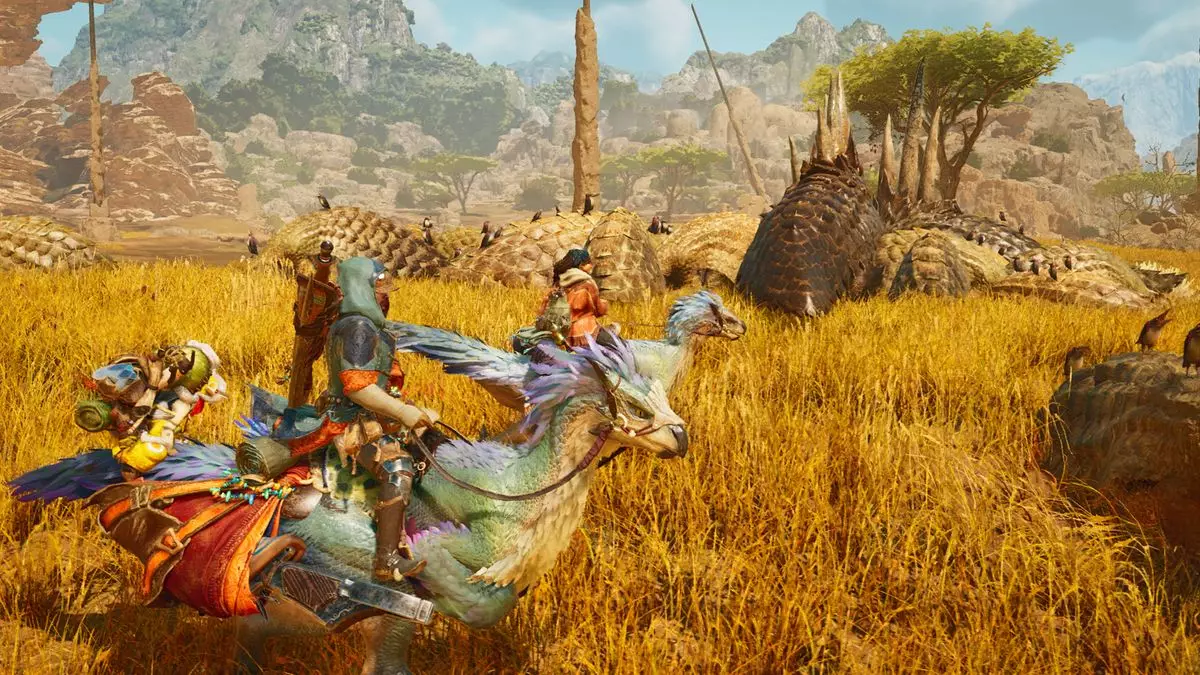As the gaming community eagerly anticipates the close of 2024, discussions about Game of the Year contenders for 2025 are already heating up. Among the titles generating significant buzz is Capcom’s Monster Hunter Wilds, which has quickly established itself as a front-runner. What sets this game apart in an increasingly competitive landscape is its unique blend of gameplay mechanics coupled with cinematic flair, particularly its homage to iconic film sequences like the legendary Akira slide.
Recent previews of Monster Hunter Wilds have tantalized fans with glimpses of its engaging gameplay. The latest demo showcased a custom character wielding a greatsword, gliding smoothly alongside her Seikret mount—the game’s answer to the traditional steed—while commandeering a sand-ship. This dynamic interaction between characters and towering beasts showcases the developers’ commitment to creating a vibrant ecosystem teeming with life and adventure. However, it’s not just the visuals that resonate; it’s the seamless integration of movement mechanics that provides a sense of fluidity and immersion, making seasoned gamers and newcomers alike feel right at home.
One cannot overlook the viral moment from the demo where the main character executes a slide reminiscent of the Akira motorcycle chase. This scene encapsulates not just skill but a certain cultural resonance that many players are bound to appreciate. It’s an intentional nod that honors the legacy of Akira, further setting this game apart from its contemporaries.
However, not all news surrounding Monster Hunter Wilds is glowing. In a recent beginner’s guide released by Capcom, this exhilarating moment is notably absent, sparking discussions within the community about the importance of highlighting unique game features, especially for newcomers. The Akira slide isn’t just an aesthetic choice; it represents a crucial aspect of gameplay that newcomers should be introduced to early on. By omitting such an iconic feature, are developers missing an opportunity to create lasting impressions on first-time players? The essence of gaming lies in its ability to evoke emotions and connections through memorable moments, and failing to showcase one of the most cinematic moves could dull the experience for many.
The inclusion of the Akira slide is more than just a gameplay feature; it’s a cultural touchstone that connects players to broader narratives found in gaming and film. The legacy of Akira stretches beyond its initial release, influencing countless filmmakers, anime creators, and, of course, game developers. Monster Hunter Wilds captures this essence, reminding players that their journey isn’t just a solitary adventure; it’s a continuation of a shared cultural experience that binds generations of storytelling.
As we look ahead to 2025, Monster Hunter Wilds emerges not merely as a contender for Game of the Year but as a testament to the power of well-crafted gameplay steeped in rich cultural references. While it has room for improvement, particularly in its presentation and mission clarity for new players, its cinematic elements and immersive mechanics position it favorably among a landscape filled with potential. Whether it earns the accolades it’s likely vying for remains to be seen, but one thing is clear: the gaming community will be watching closely.

